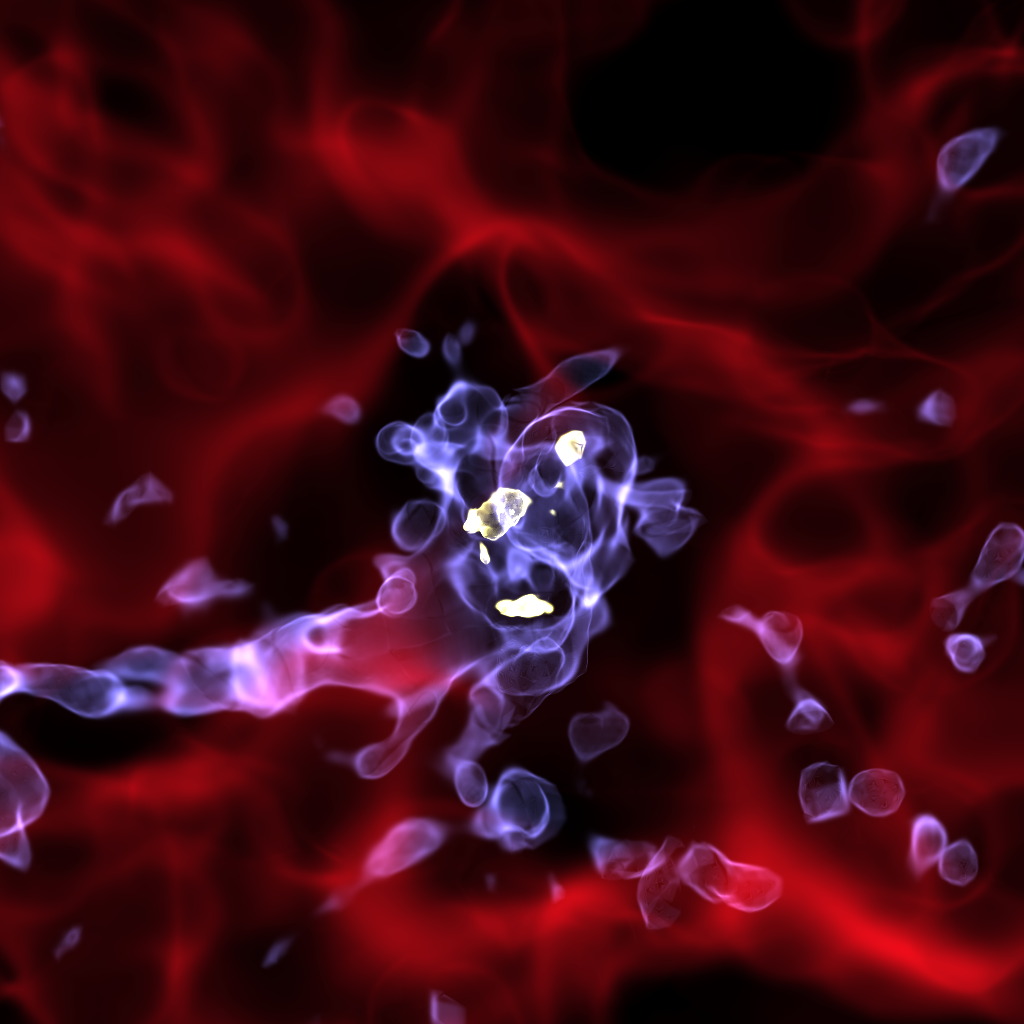Mystery Solved? How Universe's Brightest-Ever Galaxies Formed

The mystery of how the brightest galaxies in the universe form may soon be solved, as research now suggests they may be powered by prodigious flows of gas.
The most luminous galaxies in the universe, known as submillimeter galaxies, were first discovered more than a decade ago. Most of the vast amounts of light they emit gets absorbed by interstellar dust and re-emitted at far-infrared submillimeter wavelengths outside the visible range. As a result, they remained undiscovered until astronomers began combing the skies at these wavelengths.
"They have luminosities maybe hundreds to thousands of times that of the Milky Way," study lead author Desika Narayanan, an astrophysicist at Haverford College in Pennsylvania, told Space.com. [Great Images of Galaxies Across the Universe]
Submillimeter galaxies existed about 3 billion years ago during an epoch known as cosmic noon, when galaxies formed stars at extraordinary rates. Submillimeter galaxies birthed stars at the greatest rates known — 1,000 times greater than that of the Milky Way today. No such galaxies are currently seen in the cosmos, researchers said.
The extreme properties of these extraordinary galaxies have challenged existing models of galaxy formation, sparking vigorous debate among astronomers. Although computer simulations have been able to form sufficiently bright galaxies, the models could not match other features of these behemoths, such as their mass and star-formation rates.
There are two schools of thought as to how these galaxies may have formed. One suggests that collisions between pairs of gas-rich galaxies drove spectacular and relatively brief 100-million-year-long bursts of star formation. The other suggests these galaxies slowly accreted mass over the course of about 1 billion years. However, neither scenario could fully explain the known features of these galaxies.
Now researchers have presented new galaxy-formation simulations that for the first time are good matches for all the known properties of submillimeter galaxies, findings that were detailed online today (Sept. 23) in the journal Nature.
Breaking space news, the latest updates on rocket launches, skywatching events and more!
"Everyone had assumed these galaxies are the result of big galaxy mergers, because the brightest galaxies in the nearby universe are all the results of galaxy mergers," Narayanan said. "But our simulations suggest the formation mechanism of these galaxies was a slow and steady buildup of gas, where gas accretes from intergalactic space and piles up in these galaxies."
These new simulations achieved levels of realism that previous models lacked by using a "zoom" technique, said astrophysicist Romeel Davé at the University of the Western Cape in Cape Town, South Africa, who did not take part in this research. In this technique, the researchers both simulated galaxies and modeled patches of these galaxies at much higher resolutions.
This approach gave the researchers accurate looks at how these galaxies arose bit by bit, while also providing the big picture of how each galaxy interacted with its surroundings, Davé wrote in a commentary on this work in the same issue of Nature.
The new simulations suggest these galaxies sustained star-formation rates of about 500 to 1,000 suns per year for 1 billion years or so. This intense activity was a natural, long-lasting phase in the evolution of these massive galaxies.
Although supernova explosions from dying stars can propel gas outward from these galaxies and thus drive away the fuel needed for star formation, the scientists found these outflows had trouble escaping the intense gravitational pulls of these galaxies. Instead, the new simulations suggest, gas often rained back down on these galaxies and got recycled into new stars.
In the future, the researchers want to investigate other kinds of galaxies seen during cosmic noon, they said.
"Some have extremely massive black holes a billion times the mass of the sun, and some are very compact and relatively dead, not forming stars rapidly," Narayanan said. "It's interesting to see that the populations of these galaxies are similar to the submillimeter galaxy population, and it's tempting to say there's some connection between the three in some evolutionary sense.
"We want to see if there is a connection between these kinds of galaxies — does one turn into another?" Narayanan added. "If so, what physical processes drive that transformation? And in the grand scheme, how does that activity relate to what their descendants look like today, and how do we find these great-great-great-grandchildren in the local universe?"
Follow us @Spacedotcom, Facebook or Google+. Originally published on Space.com.

Charles Q. Choi is a contributing writer for Space.com and Live Science. He covers all things human origins and astronomy as well as physics, animals and general science topics. Charles has a Master of Arts degree from the University of Missouri-Columbia, School of Journalism and a Bachelor of Arts degree from the University of South Florida. Charles has visited every continent on Earth, drinking rancid yak butter tea in Lhasa, snorkeling with sea lions in the Galapagos and even climbing an iceberg in Antarctica. Visit him at http://www.sciwriter.us

